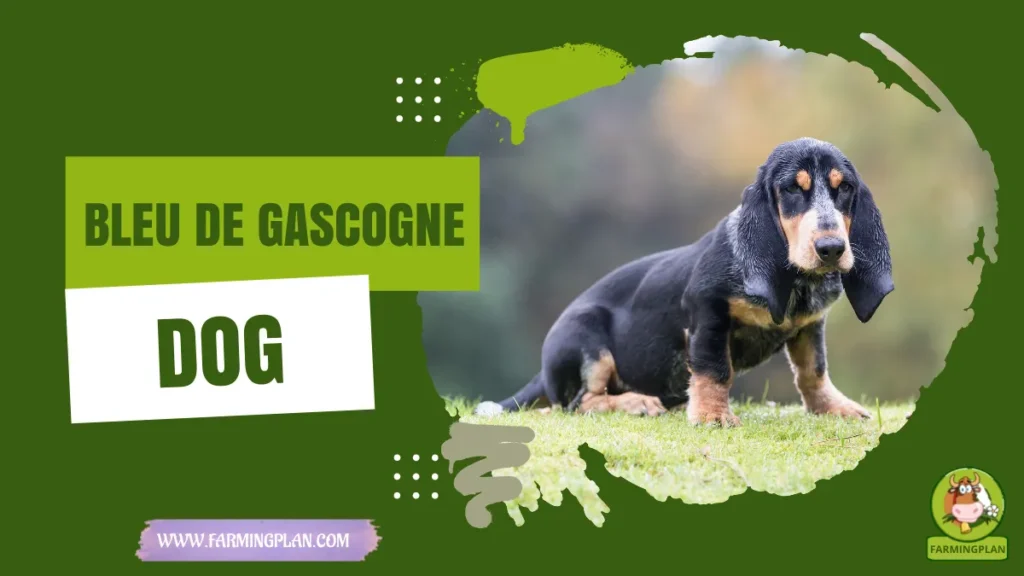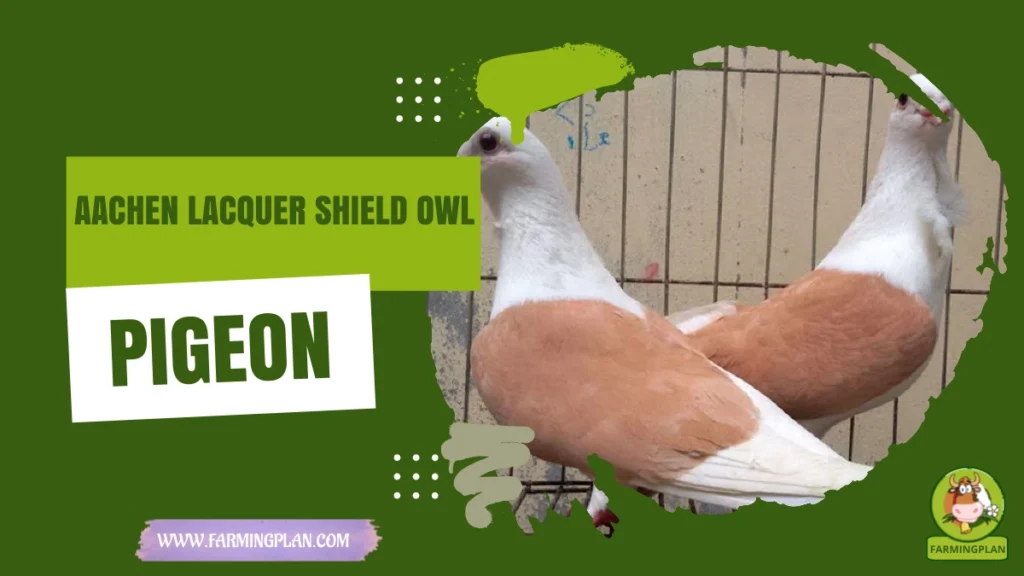If you’re a fan of unique, elegant hounds, let me introduce you to one of France’s finest: the Bleu de Gascogne Dog. Whether you’re a dog lover, breeder, or hobbyist, this striking breed will win your heart with its blue-mottled coat, noble posture, and extraordinary nose. Known for their sharp tracking abilities, these French scent hounds have been hunting companions for centuries. We’ll cover everything from their origin and appearance to feeding, training, health, and daily care. Whether you’re in the countryside or just dreaming of your next dog, I’ll walk you through what makes this breed so special and how to give them the life they deserve.

History & Origin of Bleu de Gascogne Dog
Let’s dive into a bit of history, shall we? The Bleu de Gascogne traces its roots back to southern France, particularly the Gascony region. These dogs descend from ancient Phoenician hounds and the St. Hubert Hound, both known for their elite scenting skills. Over time, breeders in France carefully developed the Grand Bleu de Gascogne to hunt big game like boar and deer.
The breed saw many changes after the French Revolution, where they transitioned from noblemen’s pack dogs to more commonly used rural companions. Hunters then developed smaller versions—Petit Bleu de Gascogne for smaller games and Basset Bleu de Gascogne for tracking in thick brush. Each size has its own legacy, but they all maintain that signature “Bleu” coat and remarkable nose.
Despite being well-known in France, they remain a rare breed internationally. Even today, organizations like the United Kennel Club and The Kennel Club (UK) categorize them under Scent Hounds or the Hound Group while working hard on conservation efforts to prevent them from vanishing into history.
Read More: Blanc de Termonde Rabbit – A Hidden Gem For Meat & Companionship
Breed Characteristics of Bleu de Gascogne Dog
The Bleu de Gascogne Dog is a showstopper. What grabs you first is the blue-mottled (or dappled) coat—actually, a mix of black and white that gives a slate-blue appearance. Their droopy ears, expressive eyes, and long bodies give them that unmistakable “hound look,” often confused with Bluetick Coonhounds or Basset Hounds.
Here’s what you’ll typically see:
- Grand Bleu: Tall and muscular, weighing 80–120 pounds.
- Petit Bleu: Mid-sized, around 50–70 pounds.
- Basset Bleu: Short-legged and compact, 35–45 pounds.
They all share a short, dense coat, long, velvety ears (hello, ear infections if you’re not careful), and a strong tail that sweeps like a flag when on the scent. Their bodies are built for endurance, not speed, which suits their job of trailing scent over long distances. Their size and presence demand a fenced area or large garden—they thrive with space to roam and sniff!
Temperament & Nature of Bleu de Gascogne Dog
Don’t let their hunting past fool you—Bleu de Gascogne dogs are some of the most gentle and laid-back companions I’ve had on my farm. They’re not hyper or destructive, but they do need a purpose. They’re scent hounds through and through, so give them a scent trail, a long walk, or a tracking game, and they’re in heaven.
These dogs are:
- Loyal and affectionate with their family.
- Cautious but polite with strangers.
- Patient with kids and calm in most environments.
- Pack-minded, so they often do well with other dogs.
But here’s the catch—they can be a bit stubborn. Training requires patience and positive reinforcement methods. Obedience training, crate training, and scent training all go a long way in shaping their behavior. Just don’t expect them to perform like a Border Collie—they follow their nose more than your voice sometimes!
Food & Diet of Bleu de Gascogne Dog
Feeding a Bleu de Gascogne Dog is more about balance and less about fancy diets. These dogs aren’t picky, but they do have big appetites—especially the Grand Bleu.
Here’s my feeding approach:
- High-protein kibble (meat-based is ideal).
- Supplement with joint-supporting nutrients like glucosamine for larger sizes.
- Avoid high-fat foods—they gain weight quickly.
- Split meals into twice daily portions to prevent bloating.
If your dog is hunting or doing scent work, increase protein slightly during active seasons. Always provide clean water, and steer clear of table scraps—especially bones, onions, and anything fatty.
Tip: “Don’t Judge A Dog’s Hunger By Their Eyes—Bleus Will Beg Even When Full!”
Usage & Purpose of Bleu de Gascogne Dog
Traditionally, the Bleu de Gascogne was bred for big-game hunting, and that drive is still very much alive. But today, their role has expanded beyond the forest.
Here’s where they shine:
- Hunting companions – for deer, wild boar, or rabbit.
- Search and rescue – thanks to their unmatched noses.
- Show dogs – especially in rare breed or hound categories.
- Family pets – loyal, calm, and low-maintenance indoors.
Just keep in mind, they’re not ideal for apartment life. They thrive in country homes, farms, or anywhere with room to track and sniff. A bored Bleu is a loud Bleu—and their deep howl-like bark isn’t something your neighbors will love!
“Every Scent Tells A Story—And The Bleu de Gascogne Dog Knows How To Read Every Chapter.”
Special Features of Bleu de Gascogne Dog
The Bleu de Gascogne Dog isn’t just another pretty face. These dogs come loaded with special traits that make them one-of-a-kind.
Here are some unique features:
- Scent Sensation: Their noses can follow trails days old, rivaling bloodhounds.
- Blue Mottled Coat: A visual signature, rarely seen in other breeds.
- History Buff: This breed is tied to ancient hounds and the French aristocracy.
- Versatility: Works in hunting packs, family homes, and training fields.
- Durability: Strong constitution, made for rugged terrain and long days outdoors.
Despite being a vulnerable native breed in some regions, their loyal following continues to grow—especially among hunters and enthusiasts of rare French hounds.
Read More: Antwerp Smerle Pigeon – Stunning Guide to a Fancy Favorite
Health Issues & Prevention of Bleu de Gascogne Dog
Like most hounds, Bleu de Gascogne dogs are generally hardy. But being proactive about their health can save you a lot of trouble—and vet bills—down the road.
Common concerns include:
- Ear infections: Their long ears trap moisture—clean weekly.
- Hip and elbow dysplasia: Especially in larger Grand Bleus. Keep weight in check and avoid excessive jumping.
- Bloat: Feed smaller meals and avoid high activity right after eating.
- Obesity: These guys love food—portion control matters.
Always choose a breeder who does hip scoring and provides a Breed Health and Conservation Plan. Regular vet checks, parasite control, and exercise are non-negotiable.
Step-by-Step Pet Owner Care Guide of Bleu de Gascogne Dog
If you’re thinking of adding a Bleu de Gascogne Dog to your life, I’ll walk you through the steps to care for them from day one. It’s not complicated—but it does require a bit of dedication and love.
Step 1: Set Up A Safe And Stimulating Space
Before your Bleu arrives, make sure you have a fenced yard, soft bedding, and a quiet space indoors. This breed needs space to sniff and play, but they also crave cozy corners to nap.
You’ll need:
- A large dog crate for resting and training.
- Durable chew toys and interactive puzzles.
- A water-resistant dog bed for indoors.
- Leash and collar with ID tags.
I recommend setting up their space in a quiet area where they won’t be startled. Let them observe your home first—they love to explore at their own pace.
Step 2: Begin Basic Training Right Away
Start with crate training, leash manners, and name recall. Don’t wait until bad habits form. Keep sessions short—10–15 minutes max, twice a day.
Focus on:
- Positive reinforcement (treats work wonders!).
- Scent-based games like “find the toy.”
- Consistent commands: sit, stay, come.
- Attending dog training classes in your area.
These dogs are intelligent, but easily distracted by smells. Keep them engaged with food-motivated rewards and clear routines.
Step 3: Build A Consistent Feeding & Grooming Schedule
Stick to twice-a-day meals and make grooming a weekly routine.
Here’s what I do:
- Brush weekly using a hound mitt.
- Clean ears every 5–7 days.
- Bathe monthly or when dirty.
- Trim nails every 3–4 weeks.
For feeding, measure kibble with a scoop—not your eyes. Add joint supplements if your dog is active or aging.
Step 4: Keep Their Nose & Mind Busy
Bleus don’t just want walks—they want to track. So create scent trails, hide toys, or join a scent work club.
Try this fun game:
Rub a treat on the ground and drag it around the yard before hiding it. Let them track it down. It’s incredible to watch that nose go to work! Also rotate toys weekly to prevent boredom. These dogs are thinkers—and sniffers.
Expert Tips & Best Practices of Bleu de Gascogne Dog
Here are a few nuggets of wisdom from someone who’s raised more than one Bleu:
- Never skip ear cleaning—it’s not optional.
- Introduce leash training early—they pull when they catch a scent.
- Use a GPS tracker if you let them off-leash.
- Don’t scold for baying—it’s part of their nature.
- Rotate toys often—they get bored fast.
Also, remember this: Bleus love structure. Feed them on time, train regularly, and give them daily nose work. A structured life equals a calm, content dog.
FAQs
Are Bleu de Gascogne Dogs good family pets?
Yes! They’re loyal, gentle, and great with kids, especially when properly trained and exercised.
Do they bark a lot?
They have a loud, deep bay typical of hounds. They don’t bark all day, but they will sound off when they’re excited or tracking.
How much exercise do they need?
Plan for at least an hour of walking or tracking daily, plus mental stimulation like puzzle toys or scent games.
Are they good with other pets?
Usually, yes—especially with other dogs. Early socialization is key, especially with smaller animals.
Can I keep one in an apartment?
Not ideal. These dogs need space to roam and follow scents. A house with a yard or access to open land is best.
Conclusion
The Bleu de Gascogne Dog is more than just a pretty hound—it’s a loyal companion, a nose-driven adventurer, and a gentle family friend. From their noble French heritage to their calm yet active personalities, they bring joy, structure, and a touch of elegance to any home with space and heart to spare. If you’re ready to commit to their needs—exercise, training, and a good grooming routine—you’ll gain a friend for life. Got a Bleu story or tip of your own? Please drop a comment below, share this guide with fellow dog lovers, or join our community of hound enthusiasts today!


